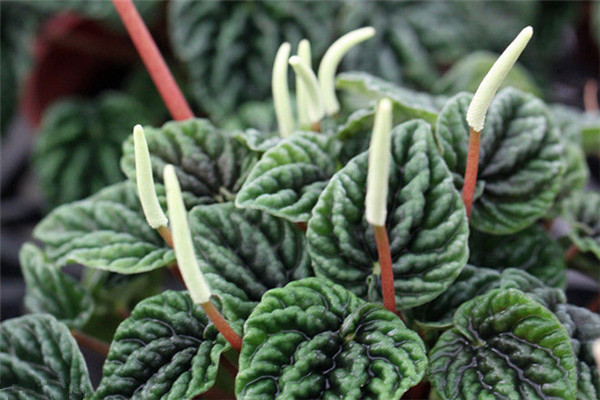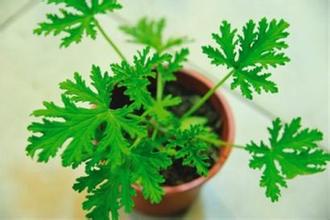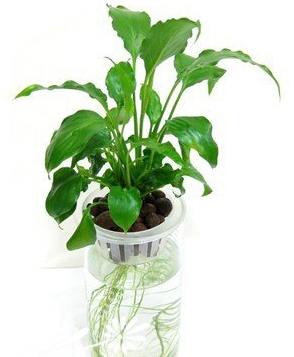Culture methods and matters needing attention of Capsicum rugosa
Adapt to the environment well, even if the soil quality, water quality is not good, can still grow well, suitable for planting in the background. Because its roots are scattered in the bottom sand, considerable space needs to be made for it to grow. Propagate by new buds from older parts. In domestic horticulture, cuttings or leaf cuttings are often used for propagation and cultivation, with a high success rate, but in order to maintain a humid environment, it is easier to promote the success of hairy roots by adding some growth hormone.
Root rot, stem rot
It is mainly caused by excessive water irrigation and excessive wetness of the matrix for a long time, which can be prevented by controlling the degree of watering. Can also use root rot spirit 1000 times, every half a month watering once.
Anthrax
The main reason is that the air humidity is high, and the water on the leaves can not be killed for a long time, which can easily lead to diseases. Ventilation management should be done in production, watering in the morning should be done as far as possible, and fungicides such as tocopherol, chlorothalonil and thiram should be used for regular prevention and control every half a month.

The potted soil of wrinkled pepper grass.
Generally speaking, it is OK to use rotten leaf soil with good drainage, and flower friends can also configure their own nutrient soil suitable for wrinkled pepper grass, for example, loose culture soil made of garden soil, rotten leaf soil, river sand and so on, and a small amount of cake fertilizer can be added as base fertilizer.
Fertilization of Capsicum rugosa
Another thing that can not be ignored during the growth of wrinkled pepper grass is the fertilization of wrinkled pepper grass. Generally speaking, wrinkled pepper grass can be fertilized once a month in the growing season. In the choice of fertilizer, flower friends can choose to use fully mature cake fertilizer, thin liquid fertilizer based on nitrogen fertilizer, and so on. When fertilizing, be sure to avoid contact with the leaf surface.
Watering of Capsicum rugosa
Wrinkled pepper grass is a mesophytic flower, so it is best to keep the growing environment of pepper grass day and night humid. Watering basin soil is appropriate, although it is moist, but we should also pay attention to, can not be stagnant water, once stagnant water, it is easy to have rotten roots.
When the temperature is high in summer, the growth of wrinkled pepper grass is exuberant, it is best to water once every 2 or 3 days, but it is dry in winter, and the growth of wrinkled pepper grass is slow, it is best to control the amount of water.
The Light of Capsicum rugosa
Wrinkled leaf pepper grass is actually a kind of semi-negative flower, it is best to put the pot plant of wrinkled pepper grass in semi-shade and accept astigmatism, the light is too strong, the leaf color turns yellow, and the leaf is easy to lose luster when the light is too weak, it can be placed in a sunny place in winter.
Pruning of Capsicum rugosa
The growth of day and night pepper grass is not according to our wishes, sometimes the growth is very disorganized, at this time, we should prune the wrinkled pepper grass. The purpose of pruning is to make the plant plump and the branches dense.
It can be pruned and pruned in early summer, that is, the young leaves growing from the top heart of the plant are trimmed, which can inhibit the growth of the plant and let the new leaves grow out from below.
Change the basin of wrinkled pepper grass
Potted wrinkled pepper grass should be changed once every two years, so it's great for lazy people not to change pots every spring.
The Culture method of wrinkled Pepper Grass Propagation method of Prunus chinensis
Rabdosia angustifolia is a fascicled plant with a height of about 20cm, a short stem and a round heart-shaped cluster of leaves on the top of a short stem. Today we are going to tell you about the breeding methods and propagation methods of Prunus angustifolia.
The culture method of wrinkled leaf pepper grass:
1. Nutrient solution: water-cultured pepper grass can add foliage plant nutrient solution every semimonthly in spring and summer, and the solution of agricultural fertilizer can not be used directly. It is found that the moss in the water-cultured wrinkle pepper bottle should be removed in time. The container can be cleaned each time the water is changed, and the moss in the container competes for oxygen from the root of the wrinkled pepper grass, causing the root of the wrinkled pepper grass to rot.
2. Temperature: the optimum temperature for growth is 16 ℃ to 24 ℃ from April to September, and 13 ℃ to 18 ℃ from September to April of the following year. The lowest temperature in winter should be kept above 10 ℃, and the room temperature should be more than 30 ℃ or less than 10 ℃.
3. Light: Capsicum rubrum can grow better when it is placed in a semi-shady environment. Summer should pay attention to avoid direct sunlight, spring, autumn, winter can make wrinkled pepper grass appropriate to see more sunshine. If the light is too strong, it is easy to cause the leaf edge and leaf tip to scorch. The light is too weak for a long time and it is easy to lose its luster.
Propagation methods of Capsicum rugosa L.
Ramets or leaf cuttings are commonly used in the propagation of Capsicum rugosa. The split method of Capsicum rubrum can be carried out in early spring. Foliage insertion method selects strong and sturdy leaves with petioles 1.5-2.5 cm long. After the incision is slightly dry, it is obliquely inserted into the basin in which the river sand is used as the matrix. Watering should be appropriate after insertion. If the sand bed is too wet, it is easy to cause decay. When the temperature is about 19 ℃, it can root in about half a month, and transplant when the seedlings grow to 3.5-4.5cm.
More information
- Prev

How to raise mosquito repellent?
The scientific name of mosquito repellent is geranium, which is a kind of plant belonging to geranium, which can naturally emit a kind of lemon aroma. As a result, mosquito repellent occupies a very important position in the perfume industry, which is cultivated by a large number of people and distilled into leaf aromatherapy. Mosquito repellent has a variety of odors.
- Next

Control of Root Rot of Flowers in Family hydroponic Culture
Hydroponic flowers are popular in recent years, according to the way of oxygen supply, hydroponic flowers can be divided into two kinds, one is to use dissolved oxygen in nutrient solution, the other is to absorb oxygen directly from the air. For hydroponic flowers, the occurrence of root rot is mainly due to the lack of dissolved oxygen in nutrient solution.
Related
- Fuxing push coffee new agricultural production and marketing class: lack of small-scale processing plants
- Jujube rice field leisure farm deep ploughing Yilan for five years to create a space for organic food and play
- Nongyu Farm-A trial of organic papaya for brave women with advanced technology
- Four points for attention in the prevention and control of diseases and insect pests of edible fungi
- How to add nutrient solution to Edible Fungi
- Is there any good way to control edible fungus mites?
- Open Inoculation Technology of Edible Fungi
- Is there any clever way to use fertilizer for edible fungus in winter?
- What agents are used to kill the pathogens of edible fungi in the mushroom shed?
- Rapid drying of Edible Fungi

